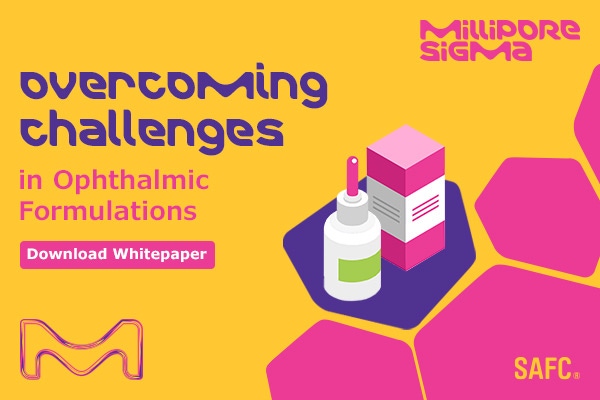Voices of Biotech
Podcast: MilliporeSigma says education vital to creating unbreakable chain for sustainability
MilliporeSigma discusses the importance of people, education, and the benefits of embracing discomfort to bolster sustainability efforts.
September 12, 2022

Sponsored Content
Ophthalmic drug formulations are growing in importance due to the increased prevalence of eye-related disorders such as diabetic retinopathy and macular degeneration. However, ocular drug delivery is challenging due to unique anatomical and physiological barriers such as pre-corneal loss factors including tear turnover, nasolacrimal drainage with potential systemic absorption via the conjunctiva or nasal mucosa, transient residence time, and the relative impermeability of the corneal epithelial membrane. The low ocular bioavailability (<10%) of conventional ophthalmic formulations is driving the need for novel approaches to improve delivery of the desired concentration, at the site of action, at a controlled rate.
The formulation of ophthalmic drugs must address a unique combination of requirements. In addition to ensuring quality, drug tolerability and fostering patient compliance, formulators must also consider tonicity, viscosity, pH, stability, sterility and microbiological purity. Further, pharmacopoeias state that ophthalmic solutions must be essentially free from particles that can be observed on visual inspection.
Polymers are an important part of the formulation toolbox and offer several benefits for ophthalmic dosage forms. They can increase contact time with the target tissue and reduce drainage of the solution, helping to enhance efficacy of the drug. If viscosity is initially too low, polymers can help increase it to sustain release of the active pharmaceutical ingredient (API). They can act as solubilizers, inhibit crystallization, stabilize the formulation, and serve as a lubricant.
This white paper provides an overview of polymers that can be used in ophthalmic formulations and highlights advantages offered using polyvinyl alcohol (PVA) through case studies.
You May Also Like